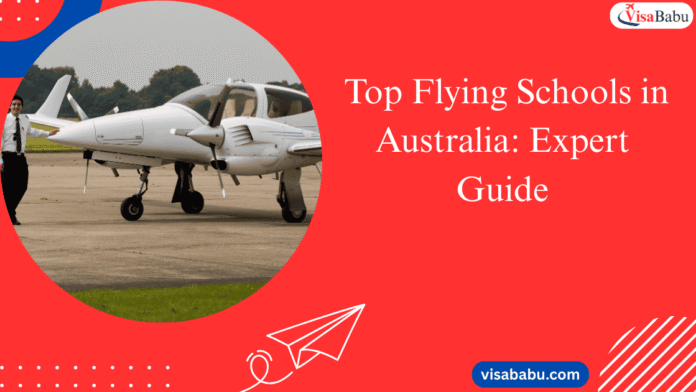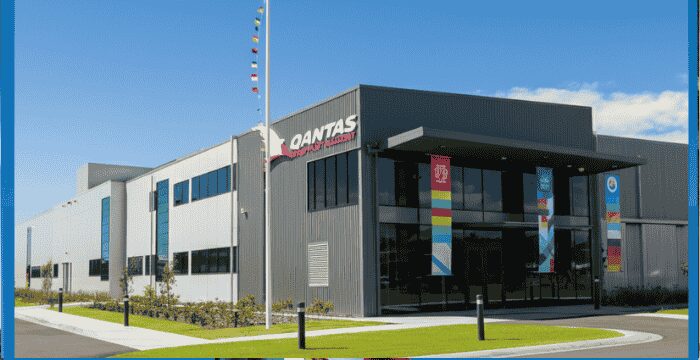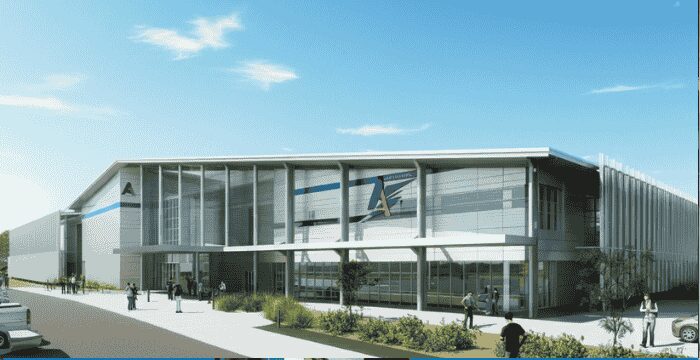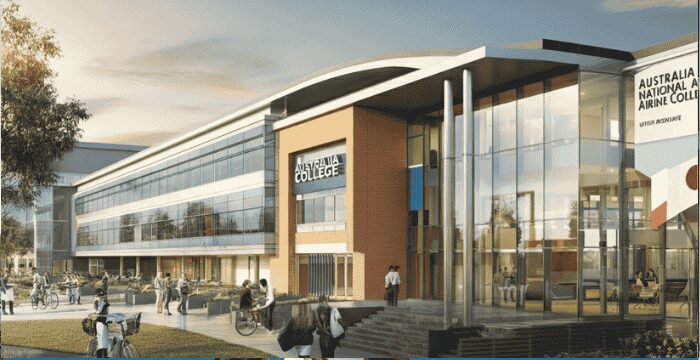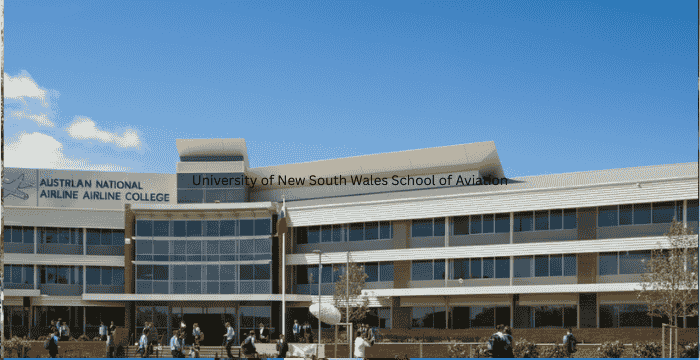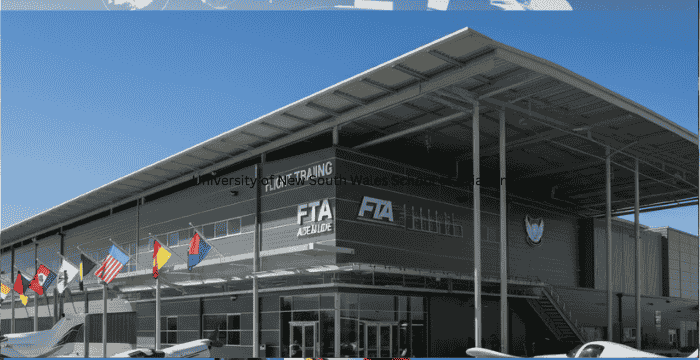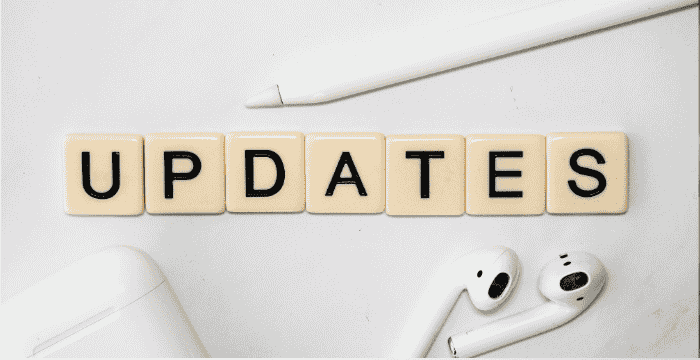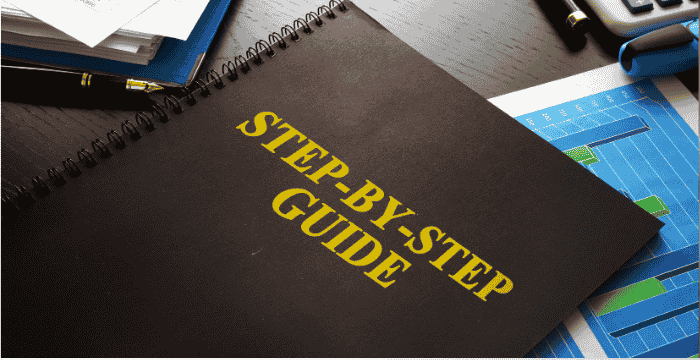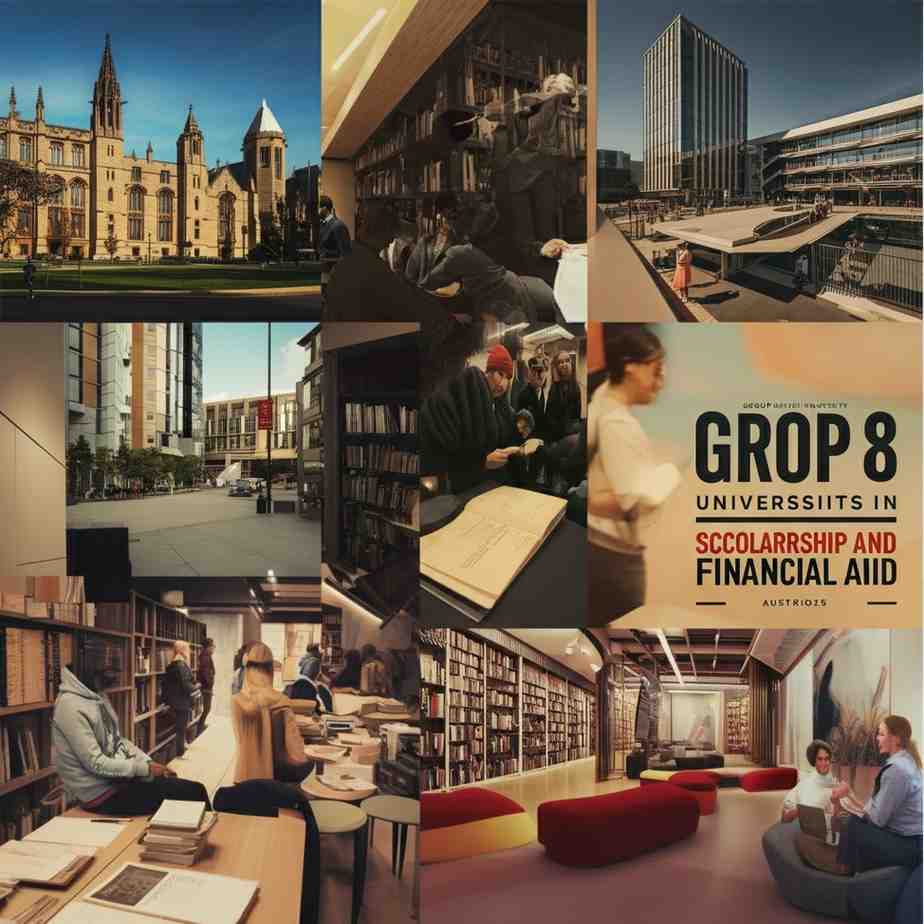Australia is well known for its aviation training and draws students from all over the world who want to experience flying. With its world-class flying schools in Australia, favourable weather conditions, and strong industry connections, the country offers an ideal environment for aspiring pilots to earn their wings. You can receive top-quality education in aviation, whether you’re from within Australia or abroad.
Growth and innovation are currently transforming the Australian aviation industry. Currently, the industry stands at $3.2 billion, and Qantas and CAE recently launched a top-of-the-line training facility in Sydney. UNSW Aviation has obtained six new Diamond DA40 XLT planes to help with training, and Qantas will start two new aviation academies by 2025 that place an emphasis on diversity and inclusion. Now, with the global demand for pilots increasing, these new technologies are important, since researchers expect over 600,000 new pilots to be needed globally in the next 20 years.
Why Choose Flying Schools in Australia in 2025?
Flying schools in Australia offer numerous advantages that make them stand out globally. Because the country is known for its clean air and varied landscapes, students can practice flying safely and reliably at any time of year. Such a regular training environment helps pilots develop what they need to fly well and with confidence.
It is common knowledge that Australian aviation institutions apply strict safety controls and cover topics that follow international aviation laws. The Civil Aviation Safety Authority (CASA) oversees these flying schools in Australia, ensuring they maintain high-quality training programs that meet global requirements. Because of these regulations, graduates of Australian flying schools are accepted by aviation industries worldwide.
Another compelling reason to choose flying schools in Australia for your aviation education is the country’s modern infrastructure and advanced training facilities. A lot of flight schools feature current flight simulators, strong exercise fleets and the latest technology to simulate various flying situations. Working with the newest aviation technology prepares students for what they will see in the cockpit when they start their careers.
The Australian aviation industry is well-connected with leading airlines and aviation companies worldwide. Often, such partnerships create internships, mentoring opportunities and possible career paths for students. If you study at the Qantas Group’s Pilot Academy, you can progress straight to work with leading carriers, which helps you chart your career from training to becoming a professional pilot.
Students from other countries will find that Australia has multicultural cities, a high standard of living and plenty of helpful services. Many flying schools in Australia for international students provide additional assistance with visa applications, accommodation, and cultural integration, making the transition to studying abroad smoother.
Top Flying Schools in Australia : Experts Latest List in 2025
Qantas Group Pilot Academy
The Qantas Group Pilot Academy, located in Toowoomba, Queensland, stands as one of the best flying schools in Australia. To meet the rising need for skilled pilots, the academy gives students a mix of education and practice, all in one program.
The CPL course at the academy is built to help students with no flying experience become pilots with the necessary skills in just 52 weeks. Students can still expect good training in every subject because the program is designed to help them progress quickly.
What sets the Qantas Group Pilot Academy apart from other flying schools in Australia is its state-of-the-art training facilities. Students in the academy use modern simulators to work on handling emergencies and making complicated flights in a secure virtual world. Training is carried out using current Diamond DA40 and DA42 aeroplanes, so students can operate in both single-engine and multi-engine aircraft.
The academy encourages diversity and welcomes everyone in aviation. The $300,000 annual scholarship program is designed to help female students and Aboriginal and Torres Strait Islander people become pilots. Thanks to this, the number of women pilots at Qantas is increasing, and it is now higher than the typical percentage seen across the world.
The academy gives international students special services to assist with the Australian education system and visas. Because of its strong connections to Qantas and partner airlines, graduates have many opportunities to begin their aviation careers with major air companies.
Australian International Aviation College is called AIAC
The Australian International Aviation College (AIAC), situated at Sunshine Coast Airport, has established itself as a premier flying school in Australia for international students. Because of its CRICOS approval, AIAC can admit students from abroad and offer them training that measures up to worldwide aviation standards.
Learning at AIAC includes courses such as the PPL and CPL, allowing students to reach their flying goals whenever they are ready and at their own speed. Completing the CPL program usually only takes about 9 months, which is quicker than other options in Australia.
What makes AIAC particularly attractive among flying schools in Australia is its strong industry connections. Students at the college benefit from partnerships with airlines such as Qantas and Cathay Pacific, which give them opportunities to build important relationships and apply for internships or jobs once they have graduated. Graduates from AIAC enjoy an advantage when competing for jobs.
At this college, students are taught how to use knowledge in practice as well as how it relates to theory. The hands-on lessons in flying taught by capable instructors help students learn how to use their flying abilities in real situations. The practical approach guarantees that students are both knowledgeable and experienced for a role in aviation.
International students can access the following services at AIAC: help with visa applications, finding a place to stay and fitting into the local culture. Students from many backgrounds enjoy a warm reception at the college, which helps them settle in more easily.
The Australian National Airline College is what we have
With over 30 years of experience in pilot training, the Australian National Airline College (ANAC) in Moorabbin Airport has built a reputation as one of the most established flying schools in Australia. ANAC has remained in the industry for so long due to its successful training and help in finding jobs for students.
ANAC uses the training syllabus from CASA’s Part 141, ensuring all students are prepared for industry needs. Because of this structure, the course guarantees that every important aspect and skill for professional piloting is taught. New developments in aviation technology and safety are regularly added to the college’s curriculum.
Having many kinds of modern aircraft in the ANAC fleet lets students see different kinds of planes and makes their flying experience better. Because training aircraft differ, graduates can easily adapt to any type of aircraft they work with later in their careers.
The college is proud of its qualified instructors, who take care to provide personal guidance to all students. Because the training is personalised, students are able to manage their difficulties and build upon their talents, which leads to them becoming better pilots.
Because ANAC is well known in the aviation industry, it attracts students from both Australia and abroad. A great number of college graduates are now successful in the aviation industry, showing how good the education is here.
The University of New South Wales School of Aviation
At UNSW School of Aviation, students learn from both books and flight practice. Because UNSW is one of just two Australian universities with its own aircraft, it offers students more than just the usual pilot training.
In this program, students learn important theory and gain important skills needed for a successful career in aviation. All the curriculum material is based on navigation, aviation safety, understanding people in aviation and other necessary subjects for professional flying.
What sets UNSW apart from other flying schools in Australia is its recent investment in six new Diamond DA40 XLT planes, enhancing the training experience for students. Because these aircraft are so advanced, students can gain valuable experience using the latest systems and equipment found in many airlines.
Students at UNSW complete their first 160 hours of training on the Diamond DA40 and finish with the last 40 hours in a multi-engine plane. As they go through the progression, students learn how to operate aircraft as their tasks and challenges increase.
As part of UNSW’s resources, students can apply for the Qantas Group Aviation Career Enrichment (Q-ACE) Program and receive mentoring from skilled pilots throughout their degree. Those who finish this program can be picked for jobs with QantasLink, offering them a direct road from studying to their first flight.
UNSW recognises the cost of aviation training and offers a Sir Reginald Ansett Scholarship for Aviation worth $10,000 annually up to three years. They allow talented students from different backgrounds to gain access to good aviation education.
CAE Melbourne
Located at Moorabbin Airport, CAE Melbourne specialises in advanced flight training and simulation technology, making it one of the most technologically advanced flying schools in Australia. Because CAE is globally known for its aviation training, the Melbourne facility offers the same excellent programs for future commercial pilots.
At CAE Melbourne, students learn both the concepts and practice of flying in the same program. Using this approach, students get the training they need for both exams and practical flying. The program is made to use time wisely without lowering the quality of the training.
Students learn better with the facility’s advanced simulators, which mimic real-world flying settings. With these simulators, students can practice important procedures and difficult actions safely before doing them in a real aircraft.
Together with airlines, CAE creates custom training programs that serve the industry’s needs. By working with the airline, students find out what it requires in new employees and can adapt their learning to the latest airline practices. Because the curriculum is industry-focused, many CAE graduates quickly start their careers in aviation.
CAE Melbourne supports international students by giving them advice on dealing with Australian learning and visa guidelines. Because the school is global, it opens doors for students to build international contacts and find work anywhere.
Adelaide’s Flight Training (FTA)
Flight Training Adelaide is another of the best flying schools in Australia, recognised for its commitment to excellence in pilot training. Because of its long experience in aviation education, FTA is trusted by many in the airline industry to provide pilots who practice their skills at airlines globally.
In addition to the CPL and instructor ratings, FTA provides various programs to help people enter various parts of the aviation field. Every course is designed to help everyone, from people just starting out to those who plan to become professional pilots. Because of their full programs, graduates can confidently start their careers in aviation.
The school offers scholarships to help pilots from different walks of life. They offer a chance for talented individuals to get trained without facing big financial costs. The diversity promoted by FTA makes learning better and helps create a more welcoming aviation field.
Because of the school’s good reputation and many industry partnerships, many FTA graduates get hired by major airlines. Because the school builds connections with airlines and aviation companies, students there have more possible routes into the industry.
Students at FTA use modern aircraft and simulation tools to get experience with industry equipment. Because of the use of modern technology, graduates can adapt to the world of professional aviation.
How to Choose the Best Flying School in Australia in 2025?
How well Accredited and Safe is It?
When selecting from among the many flying schools in Australia, accreditation should be your first consideration. It’s important to check that the school is accredited by the Civil Aviation Safety Authority (CASA). CASA accreditation proves that the school follows strict safety and educational rules needed for good pilot training.
Along with accreditation, see if you can find information about the school’s safety. A good flying school in Australia should show open safety statistics and a clear dedication to safety rules. Stick with organisations that include safety values in their courses and clearly describe what to do in emergencies.
A safe flight is also affected by the condition of the aircraft fleet. With modern, regularly maintained planes and modern avionics, students train in a safer way and are ready for today’s aviation industry. A school’s purchase of new aircraft, like at UNSW, is a sign that safety and good education matter to them.
The qualifications of instructors affect the standards of safety in a course. The best flying schools in Australia employ experienced instructors with extensive flight hours and teaching credentials. They should be able to show results with previous pilots who gained employment after their training.
Having more students per instructor can negatively affect both their safety and the educational results. Because of lower ratios, students get more attention and are guided properly while learning to fly.
The Types Of Flying Courses in Australia And What You Want To Do: Experts Guide 2025
Different flying schools in Australia specialise in various aspects of aviation training, so aligning your career goals with a school’s strengths is essential. If you plan to be a commercial airline pilot, find schools with links to important airlines and thorough programs for earning your CPL. If you wish to teach flying or work in a field such as aerospace medicine, it’s important that the school provides the necessary advanced certificates.
Look at how the programs are structured and for how long they last. You may find schools that offer quick certificates through accelerated programs, while others allow you to earn qualifications or degrees as well. Your decision will be based on your deadline, how much you can spend and what you want to do in your career.
The way you are taught in ground school matters just as much as how you are taught when flying. Look for flying schools in Australia that offer thorough theoretical education covering aerodynamics, meteorology, navigation, aviation regulations, and aircraft systems. It serves as a base for flying that is both safe and successful.
For international students, it’s crucial to select a flying school in Australia for international students that offers appropriate support services. For example, institutions might assist students with learning English, applying for visas, finding a place to live and understanding the culture in the country.
Learn about the number of graduates who have found work in their fields. Placing with known airlines or aviation companies is possible for many who attend schools with strong industry links and a record of successful graduates.
Latest Requirements for Enrolling in Flying Schools in Australia in 2025
There are certain important steps for international students to meet when considering joining a flying school in Australia. If you know these prerequisites, you can get ready properly for your aviation career.
- First and foremost, most flying schools in Australia require students to obtain a CASA Class 1 Medical Certificate. The detailed check guarantees you are medically fit to fly as a pilot. As part of the assessment, doctors test vision, hearing, heart, brain function and mental well-being. It’s best to finish this check early in your application, as any health problems could influence your acceptance.
- Age guidelines usually state that students have to be at least 17 or 18 to begin flying, yet some ground school training may be started earlier. Usually, age doesn’t matter, although older applicants may need more thorough medical testing.
- The main educational prerequisite is attaining Year 12 or equivalent, combined with high marks in mathematics, physics and English. Certain competitive programs ask for students to meet higher academic standards or have taken certain subjects.
- It is very important for international students to be fluent in English. Most flying schools in Australia for international students require an IELTS score of at least 6.0, with no individual band below 5.5, or equivalent scores on tests like TOEFL or PTE. Having this knowledge lets students interpret cockpit directions and speak and listen clearly during flights.
- Ensuring you can cover financial costs is an important point too. The price of training a pilot can be anywhere from ₹250,000 for the Recreational Pilot License to more than ₹43,59,220 for a Commercial Pilot License. To gain entry, international students have to show they have enough money for both studying and day-to-day living.
- Normally, international students must apply for a Student Visa (Subclass 500). You are required to present proof of studying in a CRICOS-approved course, enough finances, health insurance and a police certificate to show good character. Many flying schools in Australia offer assistance with the visa application process.
- Sometimes schools ask candidates to take aptitude tests or interviews to judge whether they are fit for pilot training. Evaluators may test how suited a person is to flying by assessing their understanding of space, ability to do several tasks at one time and other characteristics.
Here is the comprehensive table for the Requirements for Enrolling in Flying Schools in Australia 2025:
| Requirement | Details |
|---|---|
| Medical Certificate | Obtain a CASA Class 1 Medical Certificate. Includes tests for vision, hearing, heart, brain function, and mental well-being. Complete early to address potential health issues. |
| Age Requirement | The minimum age is 17 or 18 to begin flying. Ground school training may start earlier. Older applicants may require more thorough medical testing. |
| Educational Prerequisites | Year 12 or equivalent with high marks in mathematics, physics, and English. Competitive programs may require higher academic standards or specific subjects. |
| English Proficiency | IELTS score of at least 6.0 (no band below 5.5) or equivalent scores on TOEFL or PTE. Essential for understanding cockpit directions and effective communication during flights. |
| Financial Requirements | Training costs range from ₹250,000 (Recreational Pilot License) to over ₹43,59,220 (Commercial Pilot License). International students must prove financial capability for tuition and living expenses. |
| Student Visa (Subclass 500) | Required for international students. Must provide proof of enrollment in a CRICOS-approved course, financial capability, health insurance, and a police certificate for good character. |
| Aptitude Tests/Interviews | Some schools may require aptitude tests or interviews to assess suitability for pilot training, including spatial awareness, multitasking ability, and other relevant skills. |
Latest Application Process for Flying Schools in Australia in 2025
The application process for flying schools in Australia typically involves several steps, and understanding this process can help prospective students prepare effectively.
- Conducting research comes before you apply. Investigate various flying schools in Australia to find those that align with your career goals, budget, and preferred location. Pay attention to the school’s accreditation, the subjects it offers, the facilities it has and what its graduates accomplish.
- After you have a list of potential schools, check what needs to be included in your application to each one. Among these are academic transcripts, proof that you speak English, medical certificates and financial documentation. International students are urged to make sure they follow the visa process and submit their course to CRICOS.
- Most flying schools in Australia require applicants to submit an online application form, along with supporting documentation. Personal documents, your academic records and proof of your ability in English may be part of this. Almost every school will charge an application fee, and it is usually not refundable.
- After you have sent in your application, many schools use tests to gauge your ability to be a pilot. They look at your ability to perceive space, use math, do multiple tasks and other important skills for flying. Work on sample questions and practice what you need to do for these tests.
- If you succeed in the tests, you may receive an invitation to interview. As a result, the school is able to judge your interest in the program, your communication abilities and how well you fit into their program. Using this channel, you can find answers to questions about the school’s courses and facilities.
- For international students applying to flying schools in Australia for international students, the process includes additional steps related to visa applications. When you’re admitted to a course, you get a Confirmation of Enrollment (CoE), which you will need for your visa.
Here is the table for the latest application Process for Flying Schools in Australia in 2025:
| Section | Details |
|---|---|
| Latest Requirements for Enrolling | – Academic transcripts- Proof of English proficiency- Medical certificates- Financial documentation- International students must follow visa processes and ensure the course is listed on CRICOS. |
| Application Process | |
| 1. Research Schools | – Investigate schools aligning with career goals, budget, and location.- Check accreditation, subjects offered, facilities, and graduate outcomes. |
| 2. Prepare Application Documents | – Gather academic transcripts, English proficiency proof, medical certificates, and financial documentation.- International students must ensure compliance with visa and CRICOS requirements. |
| 3. Submit Application | – Complete online application forms.- Include personal documents, academic records, and English proficiency proof.- Pay a non-refundable application fee. |
| 4. Take Aptitude Tests | – Schools assess spatial awareness, math skills, multitasking, and other pilot-related abilities.- Practice sample questions to prepare for these tests. |
| 5. Attend Interviews | – Successful test candidates may be invited for interviews.- Schools evaluate interest, communication skills, and program fit.- Opportunity to ask questions about courses and facilities. |
| 6. Visa Process for International Students | – After admission, receive a Confirmation of Enrollment (CoE).- Use the CoE to apply for a visa. |
| 7. Complete Enrollment | – Pay fees to finalise enrollment after acceptance and visa approval. |
After your acceptance and if you have a visa, you’ll have to complete enrollment by paying fees, booking your living space and joining orientation sessions.
Latest Flying Programs to Choose for The Use of Scholarships and Financial Aid in 2025
It’s true that flight training costs a lot, but you can find many ways to get financial aid. Opportunities like this are especially useful for students from different backgrounds who could find the money needed otherwise too hard to get.
- The Qantas Group Pilot Academy offers one of the most substantial scholarship programs among flying schools in Australia. The $1.5 million donated by the group over five years will allow for 50 scholarships for female students and Aboriginal and Torres Strait Islander people. Each scholarship is worth up to $30,000 and pays for all accommodation, meals and utilities at the Academy, so training is much more affordable.
- Through Swinburne University of Technology, the Sir Reginald Ansett Scholarship for Aviation gives $10,000 a year for up to three years to students who show both academic strength and a need for financial support. By 2025, there will be three scholarships offered, so this is a good and busy chance for those hoping to become pilots.
- International students can use the Education Future International Scholarship and Gyan Dhyan Scholarships to cover costs in aviation programs in Australia. Many times, these scholarships focus on grades, what potential leaders can offer and if students require financial assistance.
Many flying schools in Australia also offer internal scholarships or payment plans to help students manage the cost of training. For example, some scholarships are granted based on impressive achievement and others are provided to students who prove that they have financial problems.
Students who meet the criteria may receive government assistance for their aviation courses through FEE-HELP. You are required to repay these loans, but you don’t have to start making payments until you are earning enough.
Airline sponsorships can mean you receive full or part coverage for your training, on the condition that you promise to join the company after you finish. They are tough to get, but they include financial help as well as a clear path to follow.
When researching flying schools in Australia, inquire about all available financial aid options and application deadlines. Since most scholarships ask for applications long in advance, you need to plan ahead to have a chance at them.
Latest Cost of Attending Flying Schools in Australia in 2025
The financial investment required to attend flying schools in Australia varies significantly depending on the type of license, institution, and program structure. You need to know these expenses for good financial planning.
- For a Recreational Pilot License (RPL), expect to pay between ₹250,000 to ₹500,000 at most flying schools in Australia. This first license will help you fly as a hobby, and it forms the base for riskier and more advanced licenses.
- The Private Pilot License (PPL) is likely to cost anywhere between ₹500,000 and ₹750,000. With this license, you are able to fly private planes, but not to carry passengers for money. It is essential training for people who want to fly for a job.
- The CPL, which you need to work as a professional pilot, is the license that costs the most. At flying schools in Australia, a CPL program can cost up to ₹43,59,220. All pilots go through both classroom sessions and the hands-on practice needed to become certified.
- In addition, you will need to budget for a CASA Class 1 Medical Certificate (₹20,000), textbooks and study materials (between ₹50,000 and ₹80,000), uniform and equipment (₹40,000 to ₹60,000) and accommodation if you’re not local.
International students attending flying schools in Australia for international students should also budget for visa fees, health insurance, and living expenses, which can amount to around ₹15,00,000 per year, depending on the location and lifestyle.
Certain schools provide a single package that covers all training, while others charge you individually for each part of the training. Always find out what is in the quoted price to prevent additional charges. Additionally, inquire about payment plans or instalment options offered by flying schools in Australia, as these can make the financial burden more manageable.
For anyone needing financial help, scholarships and sponsorships can make paying for education a lot easier. Many flying schools in Australia for international students provide scholarships specifically designed for international applicants, while domestic students can explore government-backed programs like FEE-HELP loans.
Conclusion
Australia is where many of the best flight schools in the world can be found, helping future pilots develop their skills. With its advanced facilities, experienced instructors, and strong industry connections, flying schools in Australia provide an ideal environment for launching a successful aviation career.
If you’re from Australia or another country seeking quality education, Australian aviation schools have tailored programs just for you. Through both RPL licenses and CPL certifications, the training organisations offer you both learning in the classroom and actual flying lessons.
For those concerned about costs, many flying schools in Australia for international students provide scholarships and financial aid options that make pilot training more accessible. These schools, including Qantas Group Pilot Academy and UNSW School of Aviation, gain notice for supporting diversity and inclusion using equity-based grants.
Graduates from flying schools in Australia are highly sought after by major airlines worldwide due to their rigorous training standards and industry-focused approach. Because there will be much more demand for pilots in the next two decades, this is a good time to consider flight training.
By choosing one of the best flying schools in Australia, you’re not just learning how to fly—you’re preparing yourself for a rewarding career in one of the most dynamic industries globally. Although you may want to become a commercial airline pilot or work in advanced aviation areas, Australia’s flying schools offer the right start for all your ambitions.
FAQs About Flying Schools in Australia in 2025
Q1. How much does it cost to study at a flying school?
Ans. The cost of attending flying schools in Australia varies depending on the type of license and institution. The costs of getting a Recreational Pilot License (RPL) are between ₹250,000 and ₹500,000. Typical costs for a Private Pilot License are between ₹500,000 and ₹750,000, and those for a Commercial Pilot License can extend up to ₹43,59,220.
Other costs involve medical certificates, things to study, uniforms and accommodation fees. Students from outside the country should plan for the costs involved in getting a visa, buying health insurance and paying their expenses.
Q2. Are international students allowed to apply?
Ans. Yes, many flying schools in Australia for international students are CRICOS-approved and welcome applicants from around the globe. International students need to pass an English test (IELTS score of 6.0 or the equivalent) and show they can afford their education costs, as well as qualify for a visa.
Australian International Aviation College (AIAC) and the UNSW School of Aviation both provide extra help to international students when they are enrolling and settling into the country.
Q3. What can one expect to do after finishing the course?
Ans. Graduates from flying schools in Australia enjoy strong job prospects due to the global demand for pilots. Because Australian pilot training is so good and follows international standards, Qantas and Virgin Australia often hire local pilots.
Many schools work together with airlines to create quick routes to employment. A graduate of the Qantas Group Pilot Academy can often join QantasLink or Jetstar. In addition, recent graduates may look into careers in flying for charter services, teaching others to fly, joining a corporation’s aviation department or working in ranching airstrips.
Q4. What schools are giving out scholarships?
Ans. Several flying schools in Australia offer scholarships to make pilot training more accessible:
- The Qantas Group Pilot Academy offers grants of up to $30,000 to female students and Aboriginal and Torres Strait Islander applicants.
- At UNSW School of Aviation, the Sir Reginald Ansett Scholarship for Aviation offers ₹10,000 each year for up to three years of your studies.
- AIAC offers scholarships to top students who apply.
- One of FTA’s offers is scholarships for a variety of candidates.
- International students may look into the Education Future International Scholarship and the Gyan Dhyan Scholarships, which are external scholarships.
Q5. For how long are basic pilot training courses?
Ans. The duration of pilot training programs at flying schools in Australia depends on the type of license:
- A Recreational Pilot License (RPL) can be earned in 3-6 months.
- A Private Pilot License (PPL) takes 6-12 months to complete.
- It takes between 9 to 18 months to get a Commercial Pilot License (CPL).
At institutions such as Qantas and AIAC, students have the option to complete their CPL in only 9-12 months.

